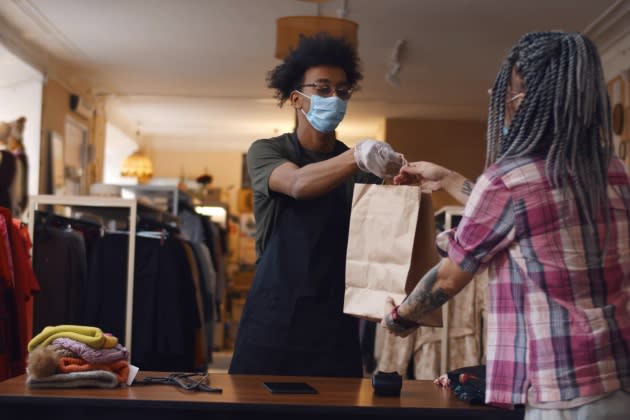How Item-level RFID Provides Significant Value for Retailers by Improving Inventory Accuracy

Across all categories, the pandemic created immense disruption and new challenges, forcing retailers and brands to elevate their omnichannel approach to meet new consumer demands and preferences. For many companies, it felt like they were in “survival mode.”
During the latest Fairchild Media Group-produced webinar, Dean Frew, chief technology officer and senior vice president of RFID solutions at SML Group, and Johan Stenstrom, supply chain developer at Stadium AB, joined WWD executive editor Arthur Zaczkiewicz to share insights into how pandemic-induced changes in consumer behavior have created pressure on retail inventory and operations.
More from WWD
“When the pandemic hit us, we lost 50 percent in sales overnight, but we didn’t lose half of the cost,” said Stenstrom. “It felt like it was ‘game on’ trying to handle that. One thing that helped us is that we were rolling out RFID [and that helped] serve the customer the correct stock inventory. For every customer that we would get in the store, we didn’t want to lose them, so you needed to be able to sell them the item.”
Moreover, Frew said, this need to get a quick overview of where inventory was becoming essential to so many businesses at the beginning of 2020 as companies experienced a massive disruption to the supply chain. Those who were leveraging technology like RFID, therefore, were able to quickly move inventory where it needed to be, whether that was to a warehouse or a local retail store.
“We had a number of retailers in certain regions that would basically just shut everything down so their warehouses were backed up,” said Frew. “We had one customer that had 50 shipping containers full of product that they weren’t sure what was in them because they’ve been shut down for months and they use the technology to immediately just open the doors and scan inside the container to figure out what was there. Some of the feedback we got is that it was able to save them about 50 percent of labor cost and labor efficiency because they just didn’t have to touch the things that were not needed because the season had passed them by.”
When it comes to making the customer happy, Stenstrom said, it comes down to having what they’re looking for. Upon investigating inventory practices Stadium AB learned that it was not operating at 99 percent inventory accuracy as it believed but rather at 70 percent accuracy, before instating RFID technology.
“Trying to keep a customer happy with 70 percent accuracy is just not possible,” said Stenstrom. “What we’ve done with this technology is get the correct stock position of inventory so that we can serve the customer with omnichannel and BOPIS [buy online, pick up in store], those kinds of options that they want. Without that technology, you’re trying to do BOPIS with 70 percent accuracy and it’s never going to be good.”
Frew agreed, saying he applauded retailers who had leveraged technology to meet customers’ new needs as they learned that they could shop differently through BOPIS or curbside pickup, while still accounting for those shoppers who shopped “normally” or even solely through e-commerce.
“What we’ve seen across the market is for retail, the fundamental element is not artificial intelligence, the fundamental element is having good inventory data so that you can make those decisions and make commitments to customers,” said Frew. “As we’ve gone through and are still going through this adjustment, the focus we’ve seen from all of our customers is really around having to know what they have, and they have to be able then if we know the item is in the store. [Retailers] need to be able to go pick it efficiently and most retailers have not put that in place and those are the things that we’ve seen give us better inventory accuracy and allow us to go pick.”
With new inventory issues rising again, Frew and Stenstrom said having RFID technology is going to be a huge benefit to retailers.
Sign up for WWD's Newsletter. For the latest news, follow us on Twitter, Facebook, and Instagram.
